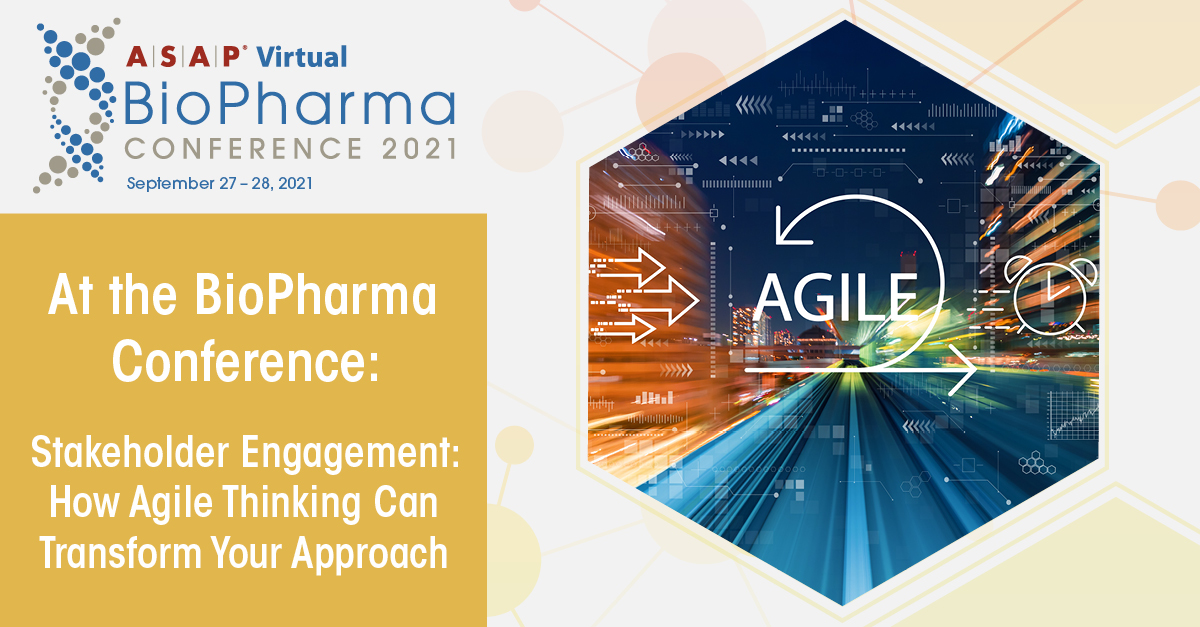Biopharma Gets Agile: Cancer Research UK Applies the Methodology to Its Program Measurement
The agile methodology for software application development has been a staple of the technology industry for some time. At a very high level, the goal of this framework is to release new products and solutions in short and frequent cycles by constantly testing and iterating new features in order to keep up with shifting priorities and market conditions. The agile methodology keeps the IT industry nimble as it keeps up with a blistering pace of change.
The agile framework is so closely associated with the tech industry that few people have thought to apply it in other contexts, let alone actually try it. The 2021 ASAP BioPharma Conference showcased one of the rare exceptions. Leave it to the ASAP Alliance Excellence Award–winning nonprofit Cancer Research UK to think outside the box and apply a methodology intended to get software engineers to think outside the box in the context of a biopharmaceutical initiative.
In the presentation “Stakeholder Engagement: How Agile Thinking Can Transform Your Approach,” two Cancer Research UK executives told the story of how the organization used the agile method to create an entirely new way to monitor and evaluate the overall performance of its Experimental Cancer Medical Center (ECMC), a network of 18 adult and 11 pediatric centers that conducts early phase, commercial, and academic clinical trials.
From a One-Dimensional View to No End in Sight
With over 40 constituent members, the ECMC’s large size and complex operation had long outgrown spreadsheets and other smaller-scale methods of activity tracking. Unfortunately, that’s still how the organization was monitoring itself heading into the pandemic.
“Our current method we feel left us with a very one-dimensional view and [had] not given us the intelligence we really want,” said Fiona Chennells, ECMC operations lead at Cancer Research UK. “There was no clear way to share network-level insights back to our centers.”
So the ECMC set out to cocreate a solution with its scientists, oncologists, regulators, CROs, pharma company stakeholders, and other funders that would deliver real insight and inspire all parties to continually use and improve it over time. However, initial buy-in was tough to achieve. Past attempts to create a tool like this had failed. Now, the ECMC program office was asking people to try this new, collaborative process that called for active participation without a clear end goal and date in sight.
Digging the Agile Method: Stakeholders Enjoy Getting Their Hands Dirty
The team would come to find out that the agile method was actually perfect for a project like this filled with complexity and unknowns. More important, the step-by-step delivery of each phase in small doses enabled everybody to see progress, inspect and improve each element of the program as many times as needed, and implement components of the program in fast learning cycles—exactly what the agile methodology is all about.
“The stakeholders will get their hands dirty rather than just being passengers on the journey. It’s about producing in small pieces rather than in one big, inflexible chunk,” said Siru Sengul, ECMC network lead at Cancer Research UK.
Creating New Success Metrics One Bite at a Time
The project facilitators began by creating three broad categories of the types of insights network participants would find useful in fine-tuning their activities: 1) scientific and clinical excellence, 2) delivery and operations, and 3) culture of innovative collaboration. They then listed several subcategories of information under each—nine for scientific and clinical excellence, seven for operations, and three under network collaboration.
“We released this as a prototype for validation, put it in front of our stakeholder groups to see what is good about it, what is missing, and what more should it have, then we reiterated,” said Sengul.
After the project team collected critical feedback through several iterations, it added a few subcategories, changed some, and subtracted a few others. The same process yielded dozens of metrics under these refined subcategories, and since the whole team had a hand in shaping them, the ECMC had the peace of mind that the people who mattered were comfortable with the end product. Ultimately, this exercise rendered 60 validated metrics that served individuals working on ECMC projects, 24 new clinical trial data points, and 12 new insights around the organization’s capabilities.
The transparency of the agile method stands in stark contrast to traditional project management, where no one sees the final product until the end. Those projects are higher risk because if stakeholders aren’t happy with the result, it’s a “perfectly executed failure,” as Sengul put it, “even if it is on time and on budget.”
Or to put it another way, Sengul likened the agile method to a tapas meal: “You don’t get everything at once, but you also don’t have to wait all the way until the end of all of your dinner to discover you don’t like it.”
If you’re hungry for more details about the Cancer Research UK ECMC’s use of the agile method, rewatch “Stakeholder Engagement: How Agile Thinking Can Transform Your Approach” to view the specific subcategories of metrics the organization created and discover Sengul’s three conditions for gauging whether your project lends itself well to the methodology. The ASAP BioPharma Conference event portal will remain open to registrants until early November.

